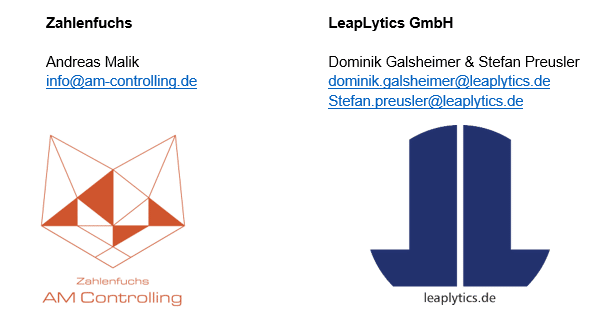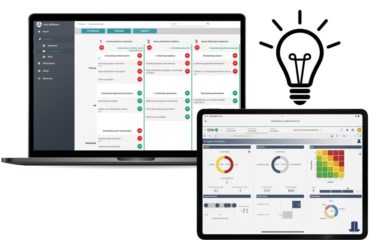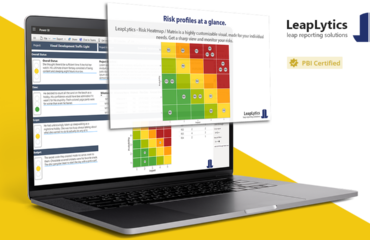Those who know the future are ahead of the game! Read in our 3-part article why Business Intelligence is especially relevant for small and medium-sized enterprises (SMEs), how challenging actually the first step is, but what are also essential advantages and how you can approach the whole topic efficiently. The SME expert for controlling and management Andreas Malik as well as the business intelligence specialists and founders of one of the leading providers of data visualizations and dashboards in the field of Power BI and Qlik Sense, Stefan Preusler and Dominik Galsheimer, will guide you through these 3 exciting parts of the article series with their experiences and expert knowledge. In the first part, we look at why Business Intelligence and SMEs go well together. The second part deals with clearly identifying advantages and thus finding the right point time to start it. The third part then shows you important first steps for implementation and introduction
Part 2: Finding the right time and recognizing advantages
In most cases, it is not easy to determine the right point of time to switch to a BI system. We must admit, that the complete reporting in Excel was built up with much effort in painstaking detail work and is constantly adapted to the current needs. In some cases, the adaptation is done by many different people, interns or temporary workers, who bring in the appropriate Excel know-how. Experience has shown that the following statements are an indication that Excel is reaching its limits:
- Excel files are getting bigger and bigger and serve as a data base
- They often crash and become very cumbersome
- They are usually only available locally. Reports are printed out or are sent by mail. The “truth” exists in multiple folder structures, mailboxes, physical filing cabinets and drawers
- Changes require more and more effort and take a long time to implement
- Data is increasingly transferred manually from one Excel file to another
- Inconsistencies between reports / reporting events occur more and more and the checking effort for official reporting and evaluation events increases
- In addition to the management, there are more and more internal report recipients with individual report requirements.
- If reporting is decentralized, e.g., to product or sales areas, further inconsistencies occur and different data is reported in some cases.
- In addition to internal stakeholders, there are also more and more external stakeholders who insist on legal structures (taxonomies) that are usually very different from the internal structures.
- Ad-hoc analyses on details are increasingly requested. Data structures do not match and have to be processed and made comparable with a lot of effort
- Financial data must increasingly be explained with operational data, e.g. impact of product, market and customer mix, margin, production variances, etc.
- Tabular structures no longer suffice for the summarizing presentation of interrelationships. The result is “number graveyards”.
- Data and interrelationships must increasingly be explained by several dimensions, e.g. products, customers, branches, regions, business units, production sites, etc.
What advantages do BI solutions offer?
When companies are increasingly confronted with the above-mentioned challenges, they consider introducing a BI system. The advantages of a BI system for SMEs can be summarized as follows:
- Uniform and comprehensive data basis can be used at any time (basis is financial and non-financial data)
- Uniform and integrated data structures are used in all reports
- Standardized visualizations give the report creators the possibility to create and present complex relationships in a very efficient and integrated way
- Uniform distribution of information mostly online and available on all devices in a responsive form. Users can individually retrieve and control information needs in a reactive interface, e.g. through filters or drill-downs or further access to other linked data
In particular, increased manual efforts for creation, correction and verification are reduced. In addition, functions are offered that make it extremely easy to meet the increased requirements.
The essential goal of a BI system should not move out of the focus, which is to support decisions and gain insights from data. The BI system is helpful if it relieves the company of manual activities. Activities not only in the creation of insights, but also in the interpretation and also in the derivation of decisions. This is mostly achieved when correlations or dependencies are shown, which would otherwise have to be made by the human understanding and brain itself. Especially when processing a lot of information, the human brain reaches limits, which do not exist at first with a technical system.
Read in the third part how to structure the topic of BI correctly and what the first concrete steps can be for your company.
For further question, we stay at your disposal:









